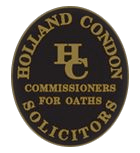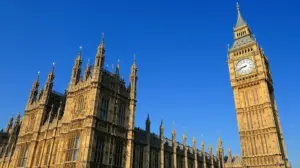The Supreme Court gave a landmark decision on legal costs on 15 June 2017.
As a result of the Supreme Court decision in the case of Isabelle Sheehan (A Minor) v David Corr, key principles of the legal costs system have been re-established. An earlier decision of the Court of Appeal was overturned in important respects.
There are very few judgments of the Supreme Court, which establish the fundamental principles on which the taxation of costs system operates. This major judgment has brought important legal clarity on a range of issues to do with legal costs.
If the Court of Appeal decision had stood, it would have been highly disruptive for the whole taxation of costs system and for solicitors’ firms – in particular for the great majority of firms who are engaged in general practice.
Among other findings, the judgment of Laffoy J (with which Denham CJ, O’Donnell J, McKechnie J and Clarke J concurred) held that:-
“The amount of time actually spent on a case is only one element of the relevant circumstances by reference to which the nature and extent of the work done is assessed….as a general proposition, the amount of time actually spent on a case should not be elevated above the relevant criteria mandated by Order 99 rule 37(22) for fixing costs.”
She also held that “although there is no obligation on the solicitor or barrister to maintain time records, or include time records in the bill of costs….it is undoubtedly in the interest of a solicitor or barrister that time records, or other records containing accurate and credible evidence of time spent, are available to the Taxing Master, in the event that a dispute arises in the course of the taxation, because such documentary evidence goes, albeit not exclusively, to the nature, extent and value of the work done.”
Background in the High Court and the Court of Appeal
All of this arose originally out of a catastrophic medical negligence case in which the Plaintiff recovered damages and costs. In view of the magnitude of the injury as well the nature and complexity of the case in negligence, the amount of the costs sought was of a significant nature.
The costs were ultimately taxed and the professional fee reduced by the Taxing Master. The reduction was appealed by the Plaintiff to the High Court where the original decision was upheld. The Plaintiff appealed once more to the Court of Appeal where a three judge court unanimously upheld the appeal on foot of a single judgment delivered by Mr Justice Cregan
On this occasion, Cregan J reached the conclusion that the Taxing Master was wrong in the methodology he used. He stated:
“He ought to have first considered the time and labour expended by the solicitors and in so doing to have assessed the number of hours spent, the seniority of the solicitor involved, the hourly rate for each solicitor and the appropriate professional charge for each element of a professional service. If he had done so, he would have been able to build an instruction fee from the ground up. It is only after this exercise has been undertaken that the Taxing Master should consider other issues such as complexity, novelty, skill, specialised knowledge and responsibility. Moreover, if the hourly rate is correctly set then these matters should be incorporated in, and reflected in, an hourly rate. The Taxing Master in this case did not follow that approach. He took intangibles into account at the very start of his analysis instead of at the end. That is of course an error in methodology.”
He went on to say that every solicitor presenting a bill for taxation on a party and party basis must furnish a bill of costs “which sets out the time and labour spent on the case and on each element of the case.” He further stated that solicitors must keep a proper record of their time and labour, and if not, there was no reason they should get any benefit of doubt about the estimate of hours spent on the case. Only such a bill with an estimate of hours and proper records to back up the estimate should be carefully considered by the Taxing Master.
As a result, he referred the case back for taxation and directed as follows:
“This should commence with a proper Bill of Costs being drawn up by the [plaintiff’s] solicitor’s costs accountants which sets out as fully as possible the time and labour expended by the solicitor in this case. Thereafter, the Taxing Master should assess it in accordance with the methodology set out above.”
Appeal to the Supreme Court
In the circumstances of this radical change in how costs were to be assessed and taxed, the Defendant applied for leave to appeal to the Supreme Court which was granted on grounds of general public importance.
The matter proceeded to hearing on 21 February 2017.
It was heard by Denham C.J, O’Donnell J, McKechnie J, Clarke J and Laffoy J. A single judgment, delivered by Laffoy J, with which the other four judges agreed, was handed down on 15 June 2017. The upshot of the decision was that the Supreme Court disagreed with the findings of the Court of Appeal, particularly in the circumstances where time was decreed to be elevated above other factors in Order 99.
On the issue of time, Laffoy J referred specifically to the case of C.D. v The Minister for Health [2008] IEHC 299, which she quoted approvingly and commended the approach of Herbert J in that case insofar as his assessment of the methodology to be adopted by the Taxing Master in the taxation of general instructions fees is concerned.
She reached the conclusion that:
“The amount of time actually spent on a case is only one element of the relevant circumstances by reference to which the nature and extent of the work done is assessed….as a general proposition, the amount of time actually spent on a case should not be elevated above the relevant criteria mandated by Order 99 rule 37(22) for fixing costs.
In those circumstances, she disagreed with the requirement of Cregan J and said that “value does not have to be put on each of the individual items making up the general instructions fee. In relation to the circumstances outlined in [Order 99] rule 37 (22)(ii), the relevance and importance of each of those circumstances will vary from case to case so the sequence in which it is appropriate to consider them will vary from case to case.”
She does, however, say that “time is a factor to which the Taxing Master must have regard. If it is in issue, he should indicate the amount of time he considers should reasonably have been devoted to the work.”
She states that although “there is no obligation on the solicitor or barrister to maintain time records, or include time records in the bill of costs….it is undoubtedly in the interest of a solicitor or barrister that time records, or other records containing accurate and credible evidence of time spent, are available to the Taxing Master, in the event that a dispute arises in the course of the taxation, because such documentary evidence goes, albeit not exclusively, to the nature, extent and value of the work done.”
In her conclusions, she clarifies the position with regard to keeping of records as follows:
“There is no requirement in law that a solicitor or barrister keep contemporaneous records of time spent on a case but bearing in mind that the Taxing Master has to ascertain the nature and extent of the work done by a solicitor or barrister on a case, and put value on that work, it may, in certain circumstances, be prudent for the solicitor or barrister to keep contemporaneous time records with a view to assisting the Taxing Master in that task, if the taxation of the costs arises. The Court of Appeal erred in finding, by implication, that such a requirement exists.”
Two other findings are of relevance. She dealt with the issue of retrospective reconstruction of time records and also the question of whether economic circumstances were relevant to the proper assessment of an instructions fee. She reached the following conclusions:
“The Taxing Master has the power to allow, or direct, the retrospective reconstruction of time spent. Such power is a discretionary power, which should be exercised having regard to all of the relevant circumstances…..General economic conditions are relevant to the proper assessment of a solicitor’s general instructions fee, or a barrister’s brief fee. The impact of the change in the economic climate on such fees is to be assessed by reference to appropriate evidence.”
In relation to the latter point she rejected the idea that economist evidence would be relevant and in fact offered the view that “the relevant professionals, solicitors, barristers, and legal costs accountants, would be in a position to furnish the appropriate evidence.”
Laffoy J made some general observations on an obiter basis in which she was critical of the general process including the archaic Appendix W. She also opined that “if used properly, the likelihood is that comparators are a valuable guide to the assessment of a fee.”
Overall, she expressed the view that “there should be a cost effective and time efficient way in which such a process can be both conducted and concluded.”




